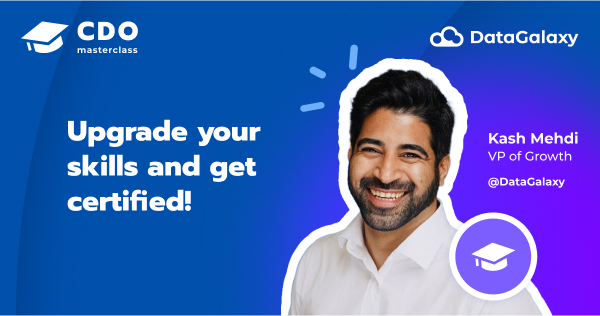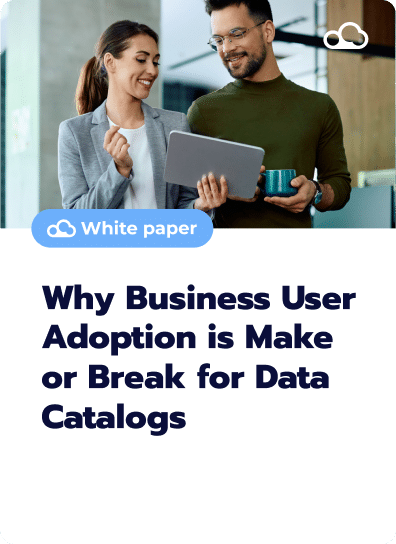Join DataGalaxy’s CDO Masterclass to gain actionable strategies, learn from global leaders like Airbus and LVMH, and earn an industry-recognized certification. This immersive program equips data professionals to drive impactful, data-powered transformations.
Who ensures your AI models are trained on accurate data? Who monitors compliance risks to ensure they are mitigated before they become issues? Who ensures scattered information is transformed into trusted, business-ready assets? Data stewards.
These often-overlooked data governance champions are crucial in keeping your organization’s most valuable resource accurate, secure, and ready for action.
Yet, finding the right people to fill these roles is no easy task. Exceptional data stewards possess a rare mix of technical skills, domain knowledge, and communication savvy—qualities that aren't always easy to come by.
So, how can data leaders identify the right candidates and set them up for success?
What is a data steward?
Data stewards enforce data quality, security, and compliance standards, keeping governance in mind for everyone working with data.
More importantly, data stewards help teams navigate governance-related technical challenges. Whether resolving conflicting data definitions, enforcing compliance in fast-moving AI pipelines, or making sure data transformations align with policy, stewards provide the guidance, clarity, and real-time problem-solving needed to keep governance practical - Not bureaucratic.
In an AI-first world, their role is even more critical. AI models can't fix bad data - They amplify it. Without strong stewardship, flawed data leads to flawed predictions, compliance issues, and decision-making blind spots.
The best data stewards combine technical expertise with business acumen, balancing governance with the practical use of data. Therefore, finding the right people and equipping them for success requires a deliberate and focused strategy.
How to identify a data steward
A successful data steward must understand data's everyday uses while maintaining alignment with governance policies and best practices.
Here's how data leaders can identify the best candidates in three key steps:
1. Understand the role
First, define precisely what a successful data steward looks like. The best stewards are problem solvers and strong communicators, able to enforce data policies without creating bottlenecks or fistfights. They collaborate and communicate naturally with IT and business teams, conveying governance best practices to technical and non-technical audiences.
Look for people who:
Understand technical & business uses of data
Have strong problem-solving skills
Can confidently uphold policies while supporting business needs
Act proactively to identify and resolve data issues before they escalate
2. Assess team members' skills & interests
The best data stewards often emerge naturally. They already champion data quality, frequently identify and communicate issues, and freely help others overcome data problems. Talk with promising candidates to gauge their interest in a formal stewardship role.
Assess who is already:
- Championing governance in their current role
- Displaying attention to detail when discussing data issues
- Demonstrating a command of the needs of technical and business teams
3. Pilot the role & monitor performance
Found a great prospect? Pilot the position before formally assigning it. Set clear goals and expectations, then watch how well they handle them. Take advantage of this trial period to fill in knowledge and skill gaps for long-term success.
A good data steward doesn't just happen. It's the culmination of sound selection and dedicated development over time.
How to engage data stewards
The first step is selecting the right people, but the real challenge is keeping them motivated and supported.
So, how do data leaders position their data stewards for success? It comes down to three key strategies:
1. Tools, training, and resources
Like anyone, data stewards need the resources to succeed.
DataGalaxy provides AI-powered metadata and quality management tools, embedded communication apps like Teams and Slack, and data access features to support data, collaboration, and security.
These integrations keep stewardship embedded in daily operations rather than an afterthought.

2. Collaboration & communication
Data stewards operate at the intersection of IT, compliance, and business teams.
Support this by making stewards a visible part of your data strategy. Involve them in decision-making meetings, provide them with direct lines of communication with data engineers and analysts, and encourage them to interact and engage with their teams. This is true not just when issues arise but as proactive partners in data quality, governance, and continuous improvement.
Stewardship isn't a solo act - It's a team effort!
3. Set clear goals & autonomy
Nothing discourages a data steward faster than ambiguity or micromanagement. Clear, measurable objectives tied to data quality, governance enforcement, and business impact help them to stay focused and motivated. But they also need autonomy.
A data steward fighting for every decision won't last long in the trenches. Trust them to enforce policies, make recommendations, and resolve governance issues independently.
When stewards feel supported and valued, they transform from passive policy enforcers into active, engaged champions of data integrity.
Putting data stewardship into practice
Effective data stewardship doesn’t happen by accident. It requires clear role definitions, thoughtful candidate selection, and continued support to ensure stewards can thrive.
By providing the right structure, tools, and autonomy, data leaders can cultivate a culture of accountability, collaboration, and data excellence—one steward at a time.
Your data,
revolutionized









